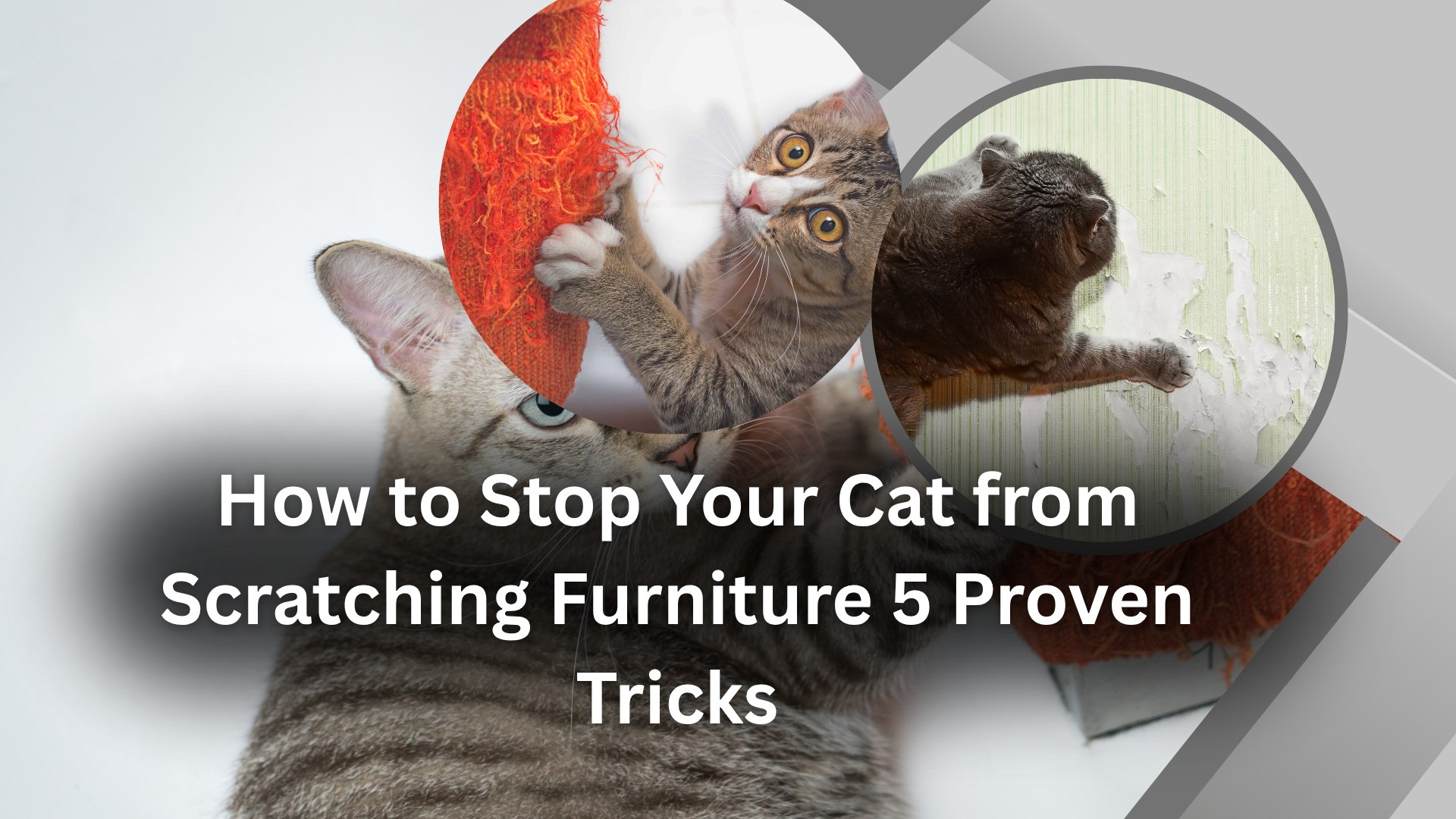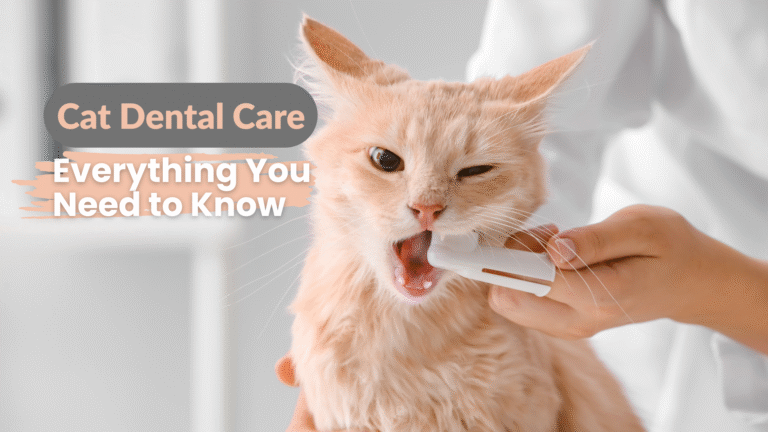How to Stop Your Cat from Scratching Furniture – 5 Proven Tricks
If you’re a cat parent, you’ve likely sat in dismay watching your cherished cat make your shiny-new sofa a scratching post. Don’t despair you’re not alone: scratching is one of the most popular pet annoyances for cat parents. But the good news is that you don’t have to trade loving your cat for saving your furniture.
In this handbook, I’ll share with you 5 smart, humane tricks that I’ve employed (and seen work for thousands of others) to stop cat scratching furniture. You’ll learn why cats scratch furniture in the first place, how to reroute this natural behavior, and what tools actually work.
Why Do Cats Scratch Furniture in the First Place?
Before we move on to solutions, let’s identify the “why.” Scratching is not your cat’s bad behavior it’s natural, healthy behavior.
The Main Reasons Cats Scratch:
-
Sharpening Claws: Scratching gets rid of the outer layers of their nails, keeping them healthy.
-
Marking Territory: Cats possess scent glands in the paws. Scratching produces a visual and scent marker.
-
Stretching and Exercise: It’s feline yoga stretching muscles and relaxing tension through scratching.
-
Stress Relief: Stress or boredom may be the cause of your cat’s excessive scratching.
The solution is not to eliminate the scratching altogether but to redirect it to where it should be going (e.g., a scratching post).
5 Proven Tricks to Stop Your Cat from Scratching Furniture
1. Offer Irresistible Scratching Alternatives
Cats must scratch so provide them with better targets than your sofa.
-
Get multiple scratching posts: Try sisal, cardboard, or carpeted posts to determine which your cat likes best.
-
Place them strategically: Position posts close to your cat’s favorite “scratching spots.”
-
Add catnip or silvervine: Scatter these natural lures to entice posts.
Pro Tip: A vertical post won’t cut it if your cat prefers horizontal scratching (such as on carpets). Get both vertical and horizontal scratchers.
2. Use Deterrents on Furniture
If your cat simply continues to return to your couch, make it unattractive to them.
-
Double-sided tape (such as Sticky Paws) is magic. Cats despise the sticky feel.
-
Furniture protectors: Clear vinyl guards or scratch shields will protect your upholstery.
-
Aluminum foil or plastic covers: Temporary but very effective.
Personal experience: When I first acquired my cat Luna, I stuck a few important spots with double-sided tape. In days, she stayed away from the couch entirely and scratched on her new post.
3. Keep Your Cat’s Claws Trimmed
Trimming every 2-3 weeks reduces damage caused by scratching.
-
Use clippers specifically made for cats (human clippers will split the claws).
-
Trim every 2-3 weeks, just the sharp tips.
-
If it seems too difficult, have a groomer or veterinarian show you.
Bonus Option: Soft nail caps (such as Soft Paws) can be put on your cat’s claws. They’re harmless, painless, and save your furniture.
4. Train with Positive Reinforcement
You can’t just yell at a cat for scratching it won’t work. Reward good behavior instead.
-
Redirect: When your cat scratches the couch, put them gently on their post.
-
Reward: Treat or praise them when they use the post.
-
Playtime: Place feather toys close to the scratching post to correlate in a positive manner.
5. Reduce Stress and Boredom
Anxious or bored cats over-scratch.
-
Interactive play: Regular playtime with wand toys or laser pointers provides happy, exhausted cats.
-
Enrichment: Window perches, climbing shelves, and puzzle feeders can minimize stress.
-
Pheromone diffusers: Feliway-like products imitate soothing cat pheromones and can stop stress-induced scratching.
What Can I Do to Make My Cat Stop Scratching My Couch?
If your cat’s obsessed with the couch, use a number of techniques at once:
-
Cover the spots where the trouble’s happening with tape or protectors.
-
Place a scratching post beside the couch (and some catnip on it).
-
Redirect each time you catch them in the act.
-
Keep claws trimmed.
Remember: Consistency is the key. It may take 2–3 weeks for your cat to completely eliminate the habit.
Quick Comparison: Scratch Deterrent Methods
| Method | Effectiveness | Cost | Best Use |
|---|---|---|---|
| Double-sided tape | High | Low | Quick fixes on sofas |
| Cat scratch posts | Very high | Medium | Long-term solution |
| Nail caps | Medium | Medium | For stubborn scratchers |
| Pheromone diffusers | Medium | Medium | Stress-related scratching |
| Furniture protectors | High | Medium | Preventing visible damage |
FAQ – Common Questions About Cat Scratching
1. What can I do to make my cat stop scratching my couch?
Protect the couch with deterrents (tape or guards), position an attractive scratching post close by, and reward your cat for scratching it.
2. Is it cruel to stop a cat from scratching?
No redirecting scratching is normal and healthy. Declawing, on the other hand, is cruel and should never be considered.
3. How long does it take to train a cat to use a scratching post?
Most cats learn within a few weeks if the post is appealing and you’re consistent with redirection and rewards.
4. Do cats grow out of scratching furniture?
Not really scratching is lifelong. The key is giving them appropriate outlets.
5. Do deterrent sprays work?
Some sprays work, but many cats get used to them. They work best when paired with a scratching post.
6. Can trimming nails alone stop damage?
Trimming reduces damage but won’t stop the urge to scratch. Combine it with training and scratchers.
Conclusion
Learning how to stop your cat from scratching furniture is all about understanding their natural instincts. You’re not trying to stop scratching entirely you’re teaching your cat where to scratch.
With persistence, a combination of deterrents, scratch-friendly replacements, and rewards, your furniture remains beautiful and your cat content.







